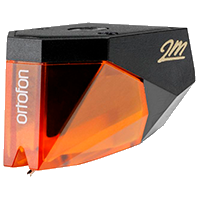Choosing the right cartridge for your turntable
Put in brutally simple terms, turntables work by dragging a tiny diamond through the grooves of a record. The cartridge's job is to convert the resulting vibrational energy into sweet, sweet analog sound. There is a large amount of musical information encoded in records - so it should be no surprise that the quality of your cartridge has a big impact on sound quality.
We offer a choice of six cartridges on our turntables, and we are often asked about the differences between them. Today's post will help explain this. But before diving in, let's go over some cartridge fundamentals. Things are about to get technical.
What exactly is a phono cartridge?
The cartridge is an electro-mechanical device that translates the information in record grooves into an electrical signal that can be amplified to produce music.There are many different types of cartridges. To keep it simple, we will focus on the operation of a moving magnet or MM-type cartridge (many of the principles remain the same for moving coil cartridges).
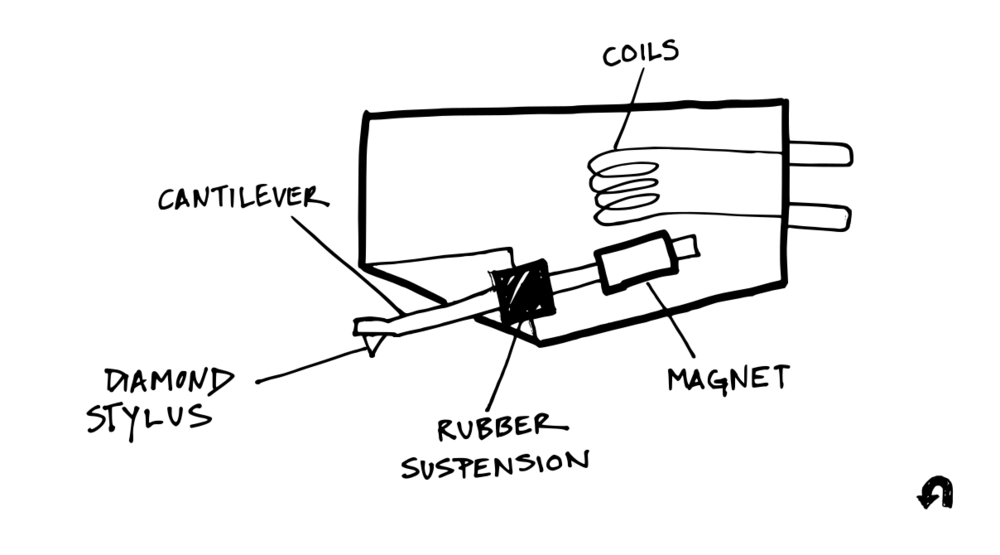
The diamond stylus tip is the only part of the cartridge that makes direct contact with the record. As the stylus traces the movements of the grooves, it vibrates the cantilever. The cantilever is a rigid tube with a stylus mounted on one end and a magnet on the other. The rubber suspension allows the cantilever to pivot so that the stylus can accurately track the grooves.
Vibrations from the stylus tip travel along the cantilever to the magnet. As the magnet vibrates, its magnetic field varies. These variations in the magnetic field generate a small voltage in the coils, which corresponds to the movement of the magnet (thanks to Lenz's Law). This signal is then passed through a phono preamp (for RIAA equalization) before reaching the amp/speakers, which convert the electrical signal into sound.
(SIDE NOTE: To get a stereo signal (left and right channels), this configuration is essentially doubled. Two magnets are attached to the cantilever at a 90 degree angle each with a corresponding set of coils. For more info on how stereo cartridges work, check out this article.)
What to Look for in a Cartridge
Stylus shape: The shape of the stylus affects how it makes contact with the record groove. The narrower the contact radius, the better the stylus will be able to track modulations in the groove. The two most common shapes of styli are conical and elliptical. Elliptical shaped styli have a smaller contact radius than conical styli - this allows elliptical styli to trace grooves more accurately and extract more musical information (especially high frequencies).
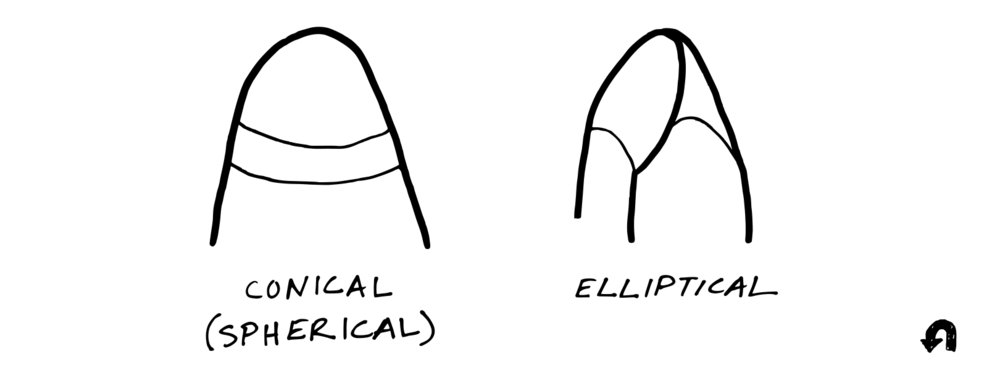
Cantilever: In order to effectively transfer vibrational energy from the stylus tip to the magnet (or other generating element), it is critical that the cantilever be as stiff and light as possible. The material, size, and construction of the cantilever affect how well a cartridge can reproduce a range of audio frequencies. The most common material used in cantilevers is aluminum alloy, although carbon, boron, and certain copper alloys are often used.
Trackability: This spec describes how well the stylus can track a modulated record groove. Trackability is measured by recording the maximum amplitude that a stylus can trace before the signal is distorted. Trackability is influenced by many factors - including stylus shape, cartridge alignment, and tonearm compatibility. The spec is often listed in micrometers (μm) - the higher the trackability spec, the better.
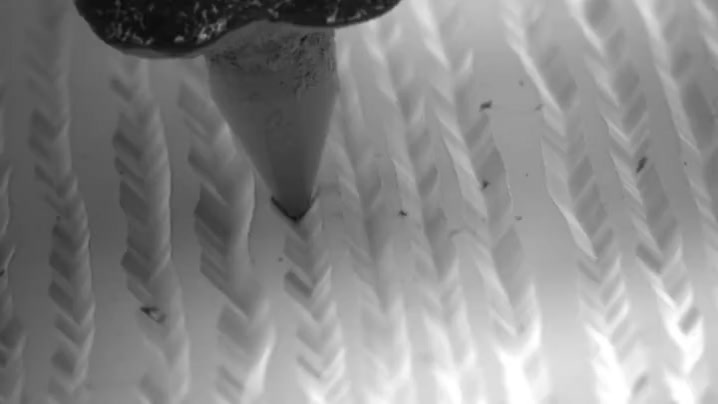
Source: Applied Science Youtube channel
Generator type: The two main generator types are moving magnet (MM) and moving coil (MC). MM cartridges are most common. MC cartridges tend to be lower output and require a preamp with a special MC setting. MC cartridges are generally more expensive. All of the cartridges we offer are MM, but if you are looking to take your Orbit to the next level, you might want to consider installing an MC cartridge like the Denon DL-110. For more technical info on MM vs. MC cartridges, check out this article.
Mount type: Most cartridges (including all of ours) are standard mount. Standard mount cartridges are secured to the tonearm by 2 vertical screws spaced 1/2" apart and feature four small posts for connecting the tonearm leads. P-mounts have four slender pins that plug directly into tonearms specifically made for use with P-mount cartridges (our tonearms are not made for this).
Comparing cartridges
Now that we know a little bit about how cartridges work, let's dive into some of the different cartridges we offer:
Cartridges
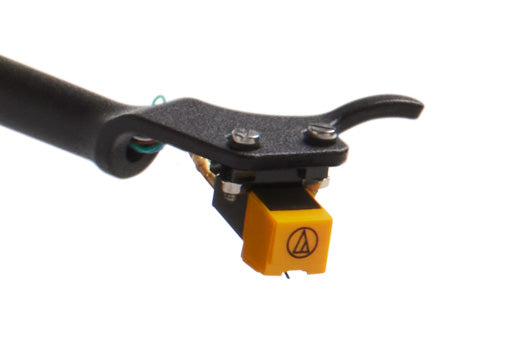

Audio-Technica AT91B
The AT91B is an excellent entry-level moving magnet cartridge. It features an ABS carbon cantilever, and delivers good musical detail with a slightly bright edge. The AT91B has a conical stylus, which somewhat limits trackability and playback resolution.
Stylus: Conical diamond
Generator type: Moving magnet
Cantilever: ABS carbon
Trackability: 60 µm
Available on the Orbit Basic and Orbit Custom.
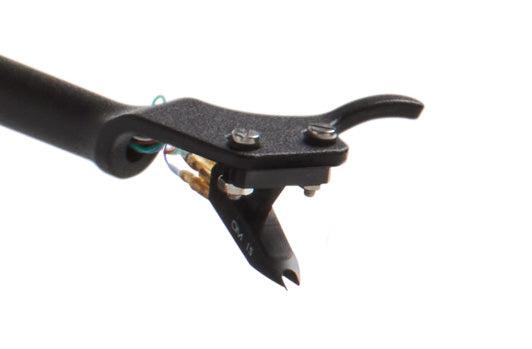

Ortofon OM5E
Built in Denmark, the Ortofon OM5E is known for its balanced and neutral sound profile. It is a great choice for listeners who enjoy a wide variety of genres. The OM5E's elliptical diamond stylus gives this cartridge an advantage over the AT91B when it comes to tracking and overall clarity. The stylus can be replaced with any of Ortofon’s Super OM Series styli – giving OM5E owners a full upgrade path.
Stylus: Elliptical diamond
Generator type: Moving magnet
Cantilever: Aluminum
Trackability: 65 µm
Available on the Orbit Plus and Orbit Custom.
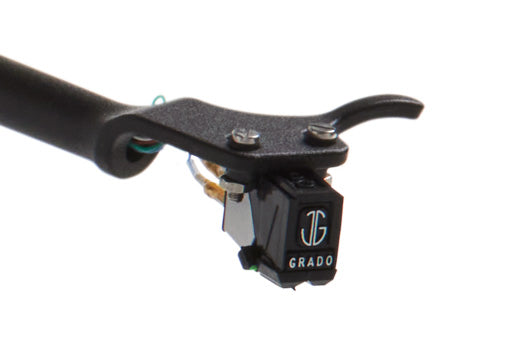

Grado Green3
Grado cartridges have been hand-assembled in Brooklyn, NY since 1953. The Green3 features a unique 3-piece cantilever and twin-magnet system with proprietary Flux-Bridger generator, which is capable of higher resolution than standard moving magnet generators. These distinctive features give the Green3 its signature warm sound and impactful bass.
Stylus: Elliptical diamond
Generator type: Moving magnet (Flux Bridger)
Cantilever: Aluminum 3-piece
Trackability: 70 µm
Available on the Orbit Custom.
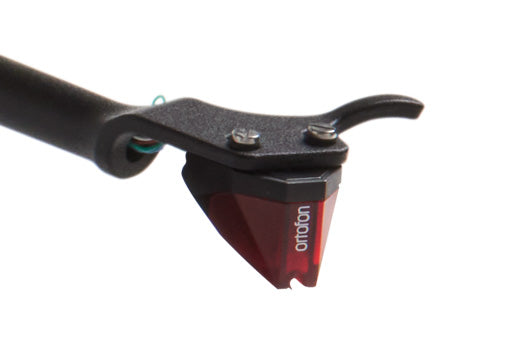

Ortofon 2M Red
The 2M Red is a versatile cartridge that has earned an excellent reputation among reviewers and everyday listeners. It features a more sophisticated generator and higher output level than its predecessor, the OM5E. The 2M Red provides open and dynamic sound, and its split pole pin design results in less coloration of your music.
Stylus: Elliptical diamond
Generator type: Moving magnet
Cantilever: Aluminum
Trackability: 70 µm
Available on the Orbit Special and Orbit Custom.
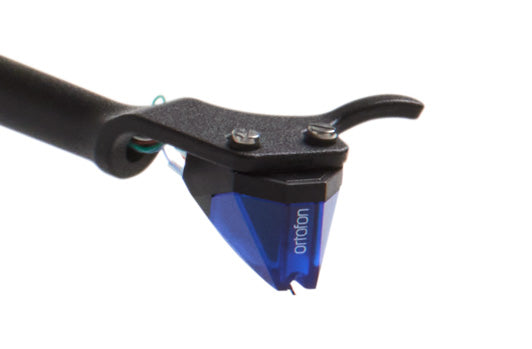

Ortofon 2M Blue
The 2M Blue delivers exceptional detail with very little distortion. It’s set apart by its highly polished nude elliptical stylus, which is shaped from a single diamond and pressed directly into the cantilever. This advanced single-piece stylus construction results in lower tip mass, which improves resolution and dynamics. The 2M Blue engine features Ortofon’s signature split pole pins for extremely flat frequency response.
Stylus: Nude elliptical diamond
Generator type: Moving magnet
Cantilever: Aluminum
Trackability: 80 µm
Available on the Orbit Custom and Orbit Theory.
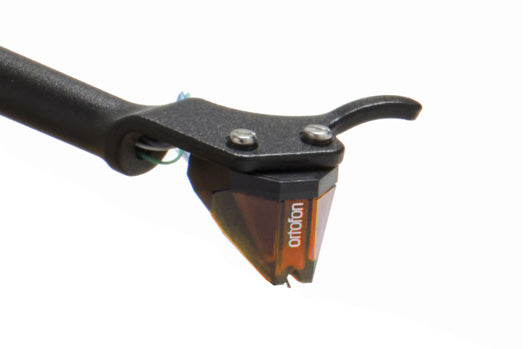

Ortofon 2M Bronze
The 2M Bronze builds upon what makes the 2M Blue great. It features a nude Fine Line diamond stylus, which is particularly well suited for demanding applications. The slim profile of the stylus flawlessly tracks even the highest frequency information, and its larger footprint minimizes distortion and record wear. The cartridge body is manufactured from Lexan DMX, an advanced material that ensures high rigidity while eliminating unwanted resonances. The 2M Bronze uses a special upgraded engine with lower coil impedance and silver-plated copper wire.
Stylus: nude Fine Line diamond
Generator type: Moving magnet
Cantilever: Aluminum
Trackability: 80 µm
Available on the Orbit Theory.


Ortofon 2M Black
The 2M Black is the flagship of the 2M series, offering an extraordinary level of detail and clarity. Designed for those who want to hear every nuance in their music, it captures the full spectrum of sound with remarkable accuracy. Featuring a nude Shibata diamond stylus, the 2M Black delivers an incredibly detailed and dynamic listening experience, bringing the artist’s presence into your room. This is the ideal choice for anyone seeking the ultimate performance from their turntable.
Stylus: nude Shibata diamond
Generator type: Moving magnet
Cantilever: Aluminum
Trackability: 85 µm
Available on the Orbit Theory.





